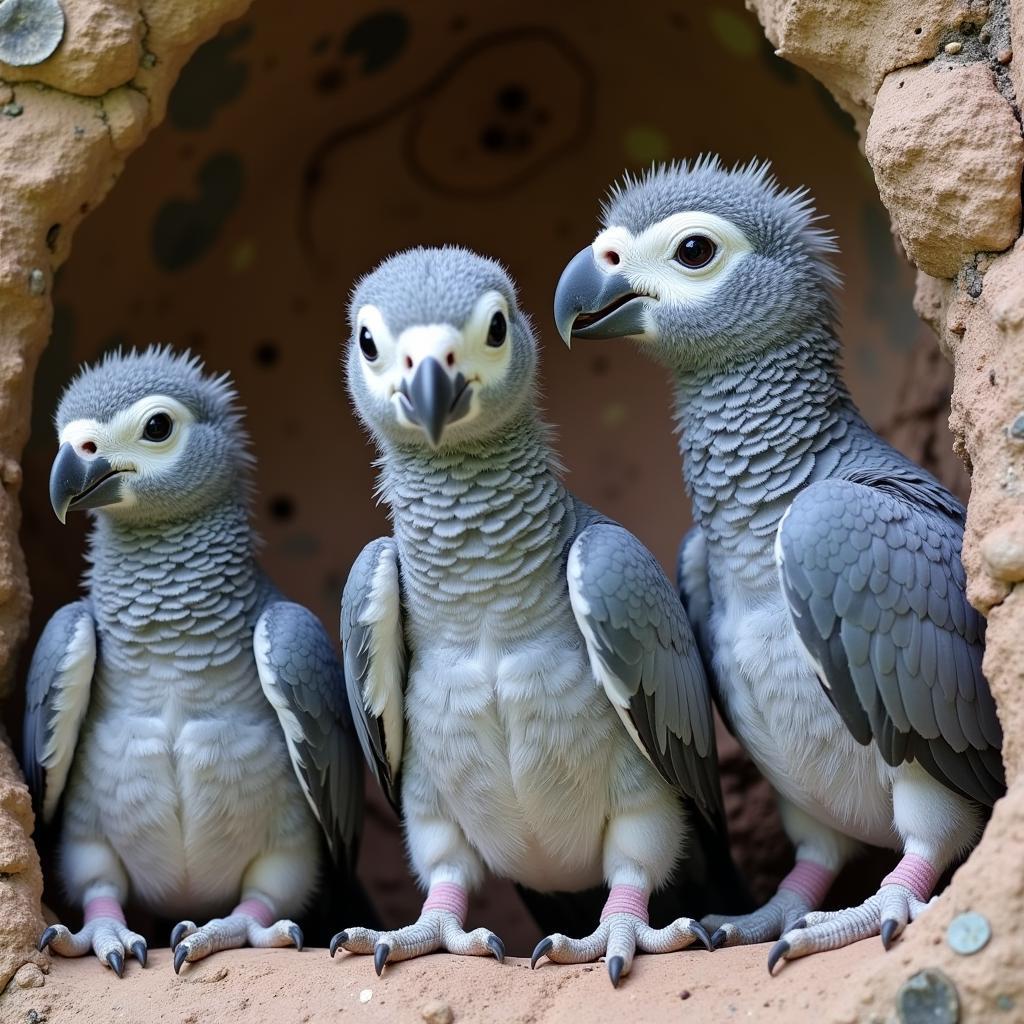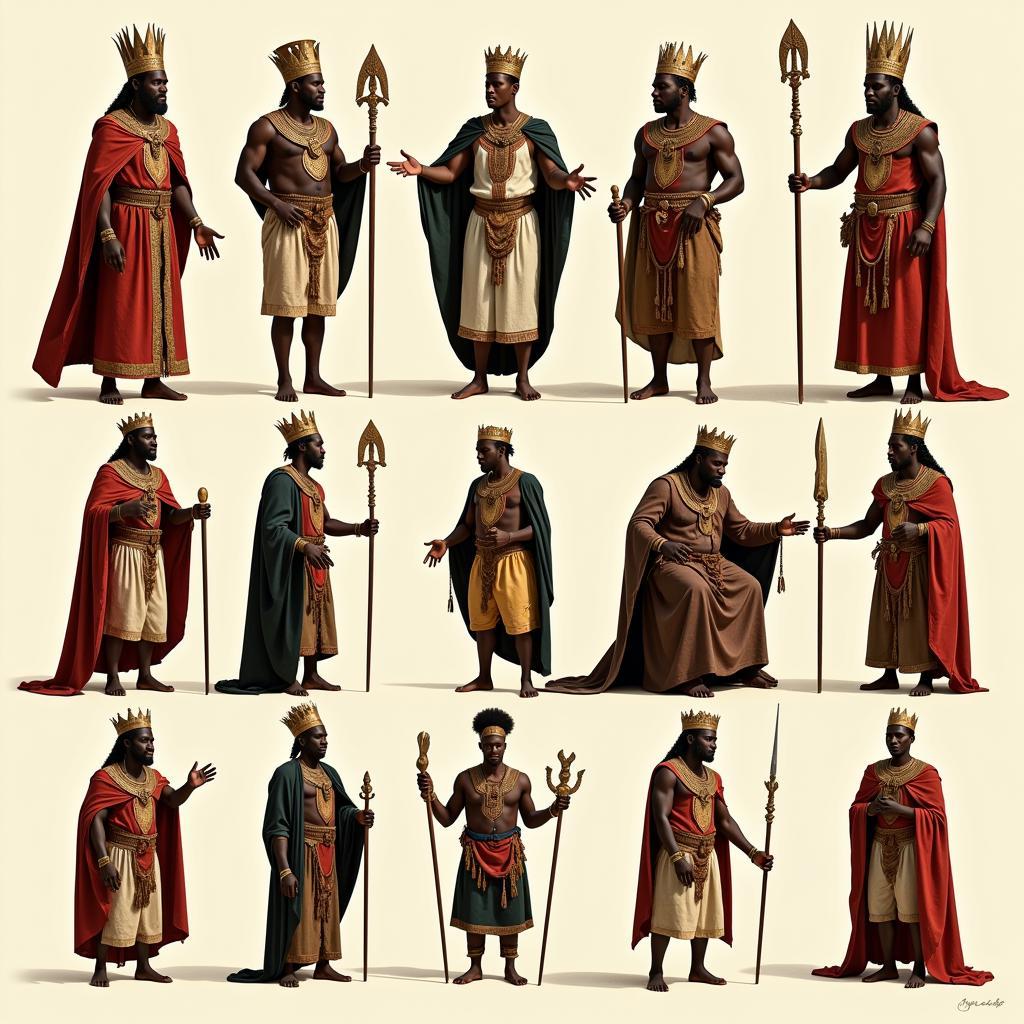The African Grey Parrot Life Cycle: A Comprehensive Guide
The African Grey Parrot Life Cycle is a fascinating journey from tiny egg to intelligent companion. This article explores the different stages of an African grey’s life, offering valuable insights into their development, care, and unique needs at each phase.
From Egg to Fledgling: The Early Stages of an African Grey Parrot Life Cycle
The African grey parrot’s life begins within a small, white egg, typically laid in a tree cavity. Incubation, primarily carried out by the female, lasts around 28-30 days. After hatching, the chick, known as a hatchling, is entirely dependent on its parents for food and warmth. They are blind and covered in sparse white down. After about two weeks, their eyes begin to open and the characteristic grey feathers start to emerge.
During this period, the parents diligently regurgitate food for the hatchling, providing a nutrient-rich diet. This stage is crucial for development, and proper nutrition significantly impacts the chick’s health and future lifespan. As the chick grows, it transitions to a fledgling. This marks a critical step in the African grey parrot life cycle.
 African Grey Parrot Chick Development Stages
African Grey Parrot Chick Development Stages
Adolescence and Beyond: Maturing into an Adult African Grey
As fledglings, young African greys start exploring the world outside the nest, learning to fly and forage alongside their parents. They continue to rely on parental care for several months, gradually becoming more independent. This period is akin to adolescence in humans, marked by learning, exploration, and developing essential social skills. As they mature, young African greys hone their mimicking abilities, a hallmark of their intelligence. They begin to perfect the vocalizations that will become their signature calls and potential talking skills.
This transition into adulthood signifies a change in their social dynamics. While still connected to their family group, young adult African greys start establishing their own identities within the flock. This period in the African grey parrot life cycle is where their remarkable cognitive abilities truly shine. Reaching sexual maturity between 3 and 5 years old, African greys form lifelong pair bonds and begin their own breeding cycles.
 Adult African Grey Parrot Soaring through African Sky
Adult African Grey Parrot Soaring through African Sky
Looking for information on an African grey’s diet? Check out this resource on the African grey food diet.
Caring for an African Grey Parrot Through Its Life Cycle
Understanding the African grey parrot life cycle is essential for providing appropriate care. From a chick’s nutritional needs to an adult’s social and mental stimulation, each stage demands specific considerations. Providing a balanced diet, a stimulating environment, and opportunities for social interaction are crucial for their well-being throughout their lives. Enrichment activities, such as foraging toys and puzzles, are particularly important for these intelligent birds, helping to prevent boredom and maintain their mental acuity.
Proper cage size is another vital factor. As they grow, African greys require more space to move and explore. Overcrowding can lead to stress and behavioral issues. For those considering breeding, understanding the nuances of African grey parrot laying is crucial for successful reproduction. Ensuring the parents have a suitable nesting environment and providing appropriate nutrition during this period are key to a healthy clutch and thriving chicks.
Conclusion: A Lifelong Commitment to an Intelligent Companion
The African grey parrot life cycle is a testament to the incredible adaptability and intelligence of these remarkable birds. From the vulnerable hatchling to the mature, mimicking adult, each stage presents unique opportunities for learning and growth, both for the bird and its owner. Understanding these stages is essential for providing the best possible care and fostering a strong, enriching bond that will last a lifetime. The African grey parrot life cycle is truly a fascinating journey.
FAQ
- What is the average lifespan of an African grey parrot? They can live for 40-60 years, sometimes even longer with proper care.
- When do African grey parrots start talking? While they can begin mimicking sounds earlier, they typically start developing more complex vocalizations and potential “talking” abilities between 1 and 2 years of age.
- How can I tell the age of an African grey parrot? Determining the exact age of an adult African grey can be challenging. Veterinarians can sometimes provide estimates based on physical characteristics.
- What are the signs of a healthy African grey parrot? Bright eyes, smooth feathers, active behavior, and a healthy appetite are all good indicators of a healthy bird.
- What kind of cage is best for an African grey parrot? A large, spacious cage with plenty of room for toys and perches is ideal.
- How can I provide enrichment for my African grey parrot? Offer a variety of toys, puzzles, and foraging opportunities to keep them mentally stimulated.
- Where can I find reputable breeders of African grey parrots? Research breeders carefully and look for those who prioritize the health and well-being of their birds. You may be interested in learning more about where to find African grey chicks for sale in India.
Considering the food options available to them, it’s intriguing to ponder what African children could have eaten. It’s also fascinating to think about African birds in trees and their diverse behaviors.
Other Questions?
If you need further assistance, contact us 24/7 at +255768904061, email us at kaka.mag@gmail.com, or visit us at Mbarali DC Mawindi, Kangaga, Tanzania.



